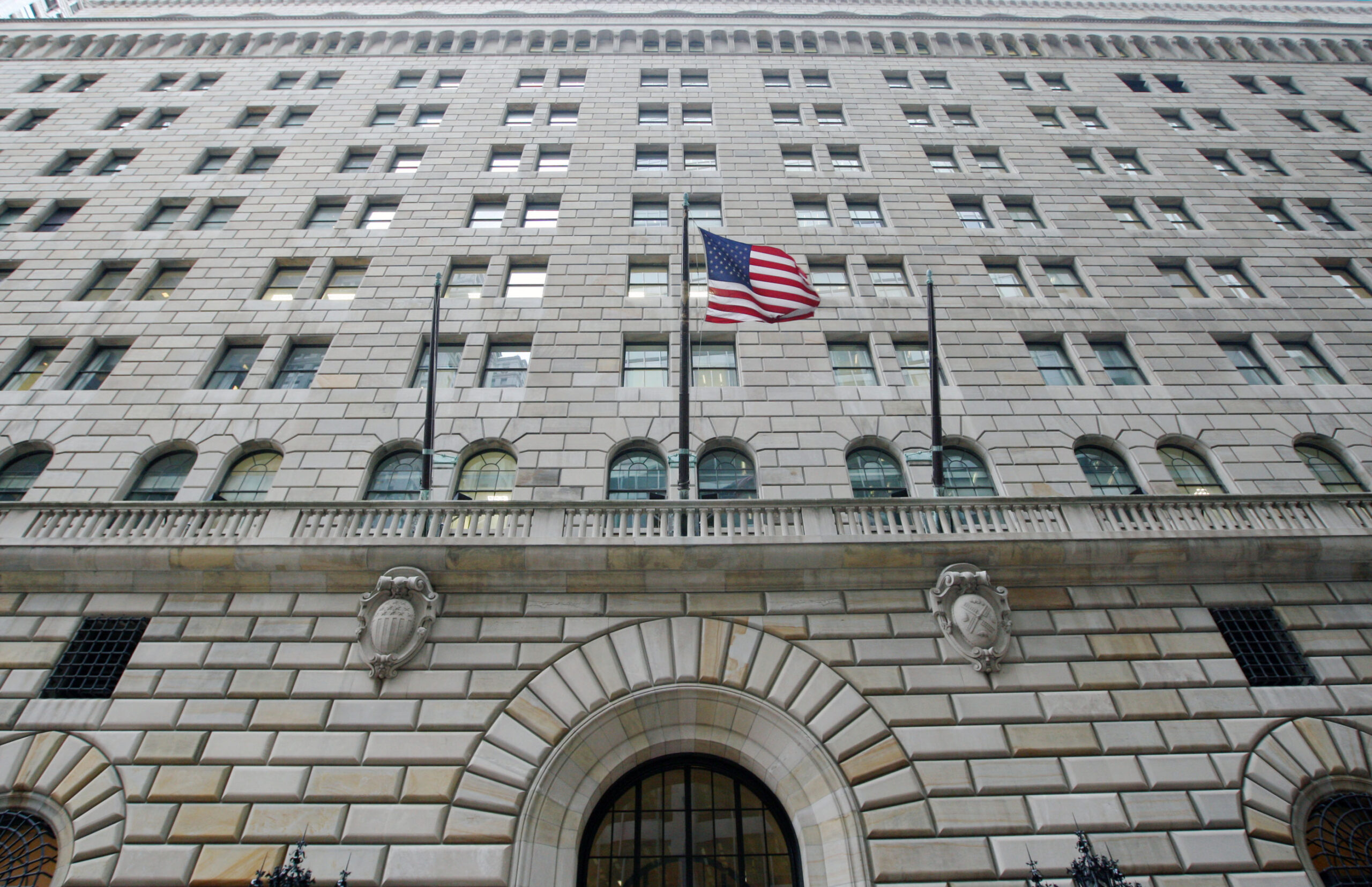
While the US banking sector is stable, growing vulnerabilities leave at least some institutions under a near-term threat of funding pressure and capital shortfalls, according to Federal Reserve Bank of New York staff.
The risks to the system are rising, albeit modestly, and those weaknesses are still below the levels that preceded the global financial crisis, according to Matteo Crosignani, Thomas Eisenbach and economist Fulvia Fringuellotti, in a post on the Liberty Street Economics blog Monday. That’s in large part because the biggest banks are less exposed to capital shortfalls and run-on-the-bank risks, their analysis of models through the second quarter of 2023 showed.
“In the short-term, banks might suffer losses in their securities portfolio that might, in turn, induce funding dry-ups and substantially weakened effective capital levels,” the blog authors wrote.
While Fed officials say the financial system is stable and “more resilient” than it was two decades ago, the banking system has been under a microscope in the wake of turmoil earlier this year that resulted in the collapse of institutions including California’s Silicon Valley Bank and New York’s Signature Bank. Large shifts in depositor cash also threaten to erode confidence in the system in the current high interest-rate environment.
Because banks have been slower to pass along the Fed’s interest-rate hikes, depositors have put their cash to work in other higher-yielding alternatives like money-market mutual funds. Those losses in institutions’ securities portfolios risk weakening capital levels.
“The March 2023 banking crisis highlighted the vulnerability of the banking sector to a sudden rise in interest rates,” the blog authors said. “Specifically, banks’ ability to limit the pass-through of rate-hiking cycles into deposit rates allows them to benefit from higher rates, but only gradually.”
Even though those outflows have slowed now that the central bank looks to be nearing the end of its hiking cycle, there’s still a risk that a higher-for-longer policy spurs additional outflows and even more losses on the banks’ security holdings that will require even more funding to replace. Short-term markets are showing that banks are starting to pay up to protect their cash holdings from sinking and to safeguard against future runs on deposits.
The NY Fed staff also noted it had updated its models for monitoring vulnerabilities in the banking sector since March.
Notable takeaways:
- Capital Vulnerability Index based on the 2008 crisis is currently at historically low levels — around 1.55% of GDP. Yet, based on the 2022 scenario, the index remains “somewhat elevated” by recent historical standards, which originates from banks’ exposure to a sudden drop in the value of securities following a potential further increase in interest rates.
- Fire-Sale Vulnerability Index, which now incorporates unrealized losses on all securities, remains elevated but has retraced some of the spike seen in March 2023.
- Liquidity Stress Ratio has increased since early 2022, “driven by a shift from liquid to less liquid assets and from stable to unstable funding.”
- Run Vulnerability Index shows an increase since early 2022, due to an increase in leverage, but also due to increases in unstable funding and illiquid assets.


